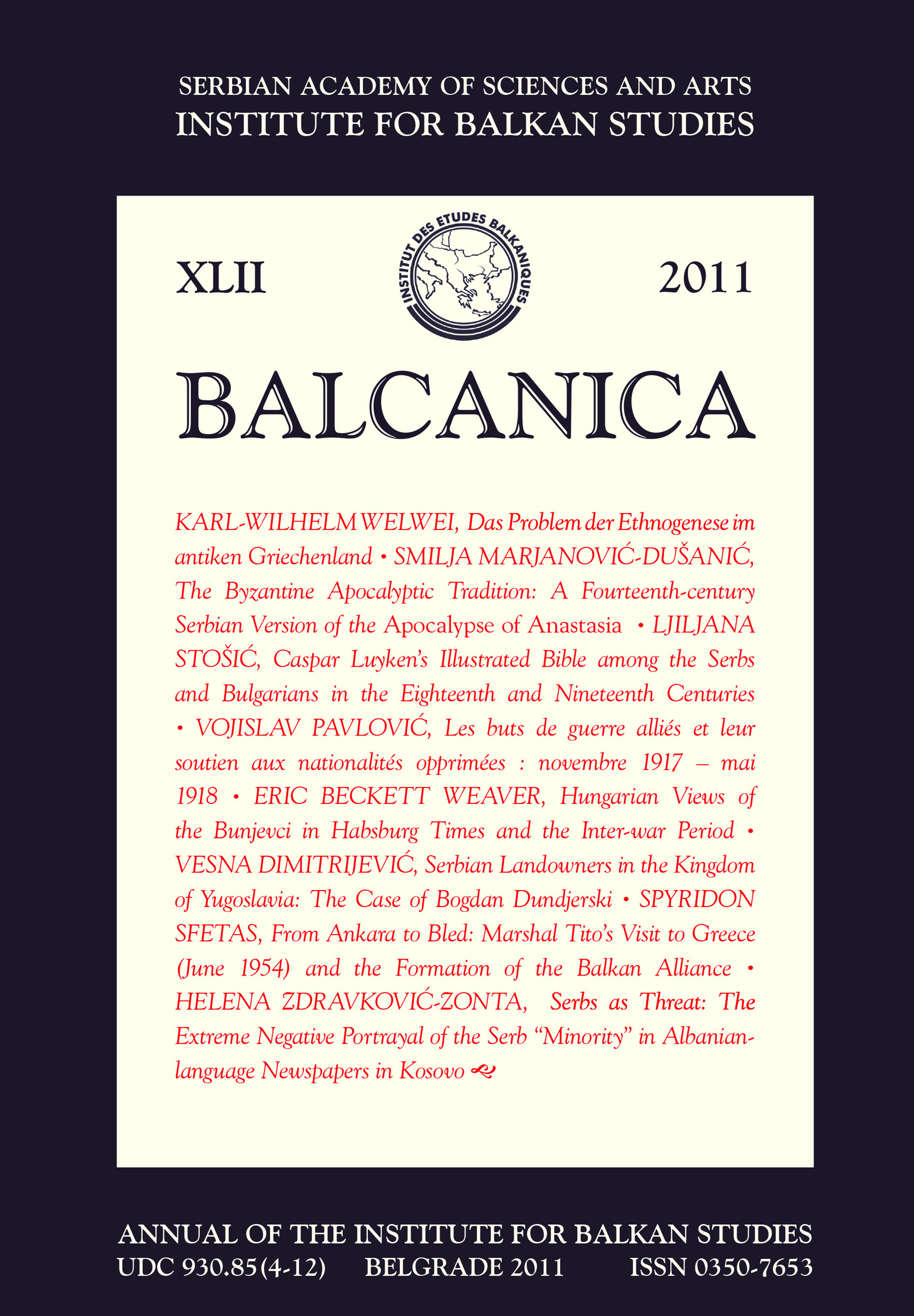Articles
Serbs as Threat: The Extreme Negative Portrayal of the Serb “Minority” in Albanian-language Newspapers in Kosovo
Published 01.12.2011
Keywords
- Serbs,
- Serbia,
- Kosovo,
- Albanian media,
- critical discourse analysis
- power relations,
- discrimination,
- master narrative,
- intractable conflict ...More
How to Cite
Zdravković Zonta, H. (2011). Serbs as Threat: The Extreme Negative Portrayal of the Serb “Minority” in Albanian-language Newspapers in Kosovo. Balcanica - Annual of the Institute for Balkan Studies, (XLII), 165–215. https://doi.org/10.2298/BALC1142165Z
Copyright (c) 2011 Balcanica

This work is licensed under a Creative Commons Attribution-NonCommercial-NoDerivatives 4.0 International License.
Abstract
Through perpetuating negative stereotypes and rigid dichotomous identities, the media play a significant part in sustaining conflict dynamics in Kosovo. Examining their discourse in terms of ideological production and representations is crucial in order to understand the power relations between the majority and the minority, the identity politics involved in sustaining them, and the intractability of the conflict. In an effort to provide a deeper understanding of the intractable conflict in Kosovo, and the role of the media in protracting it, this study uses critical discourse analysis to examine articles related to issues affecting the Serb community, published in Albanian-language print media. The master narrative that comes out of the analysis is that of “threat” — the threat that Kosovo Albanians continue to face from Serbs and Serbia; a threat that is portrayed as historical and constant. The discourse further strengthens the conflict dynamics of opposition, polarization and even hatred. This master narrative implies that Serbs are enemies, to be feared, contested, fought against; conflict is thus the normal state of affairs. The study also looks at the implications of media discourse for reconciliation efforts and the prospects of the Serb minority in Kosovo society, arguing that when the Other is presented as dangerous and threatening, fear of the Other and a desire to eliminate the threat, physically and symbolically, become perceived as a “natural” response, and thus constitute a significant conflict-sustaining dynamic.Metrics
Metrics Loading ...

